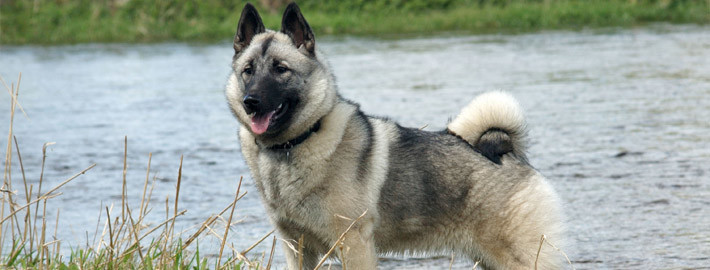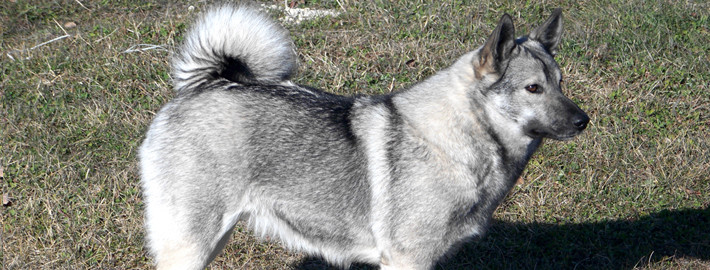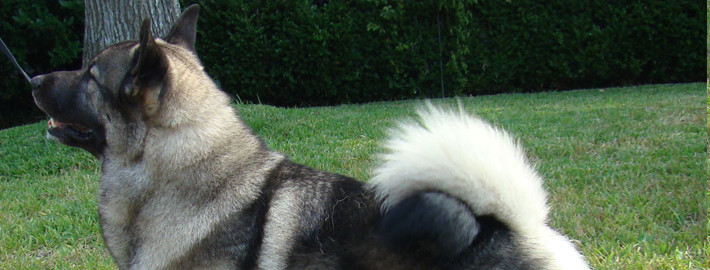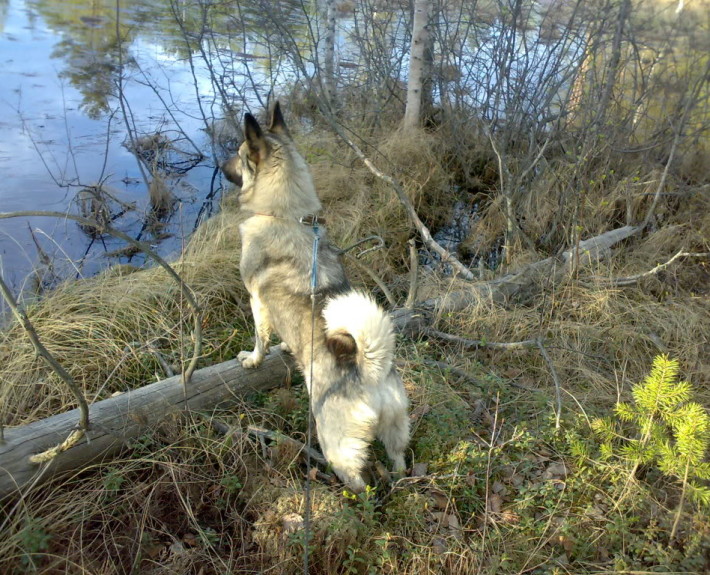What makes the Norwegian Elkhound Unique?
With a name that means “moose dog” it is no surprise that Norwegian Elkhounds have a long history as a hunting breed. These versatile dogs have also become popular as family companions in colder regions of the world.
Breed Groups
Page Contents
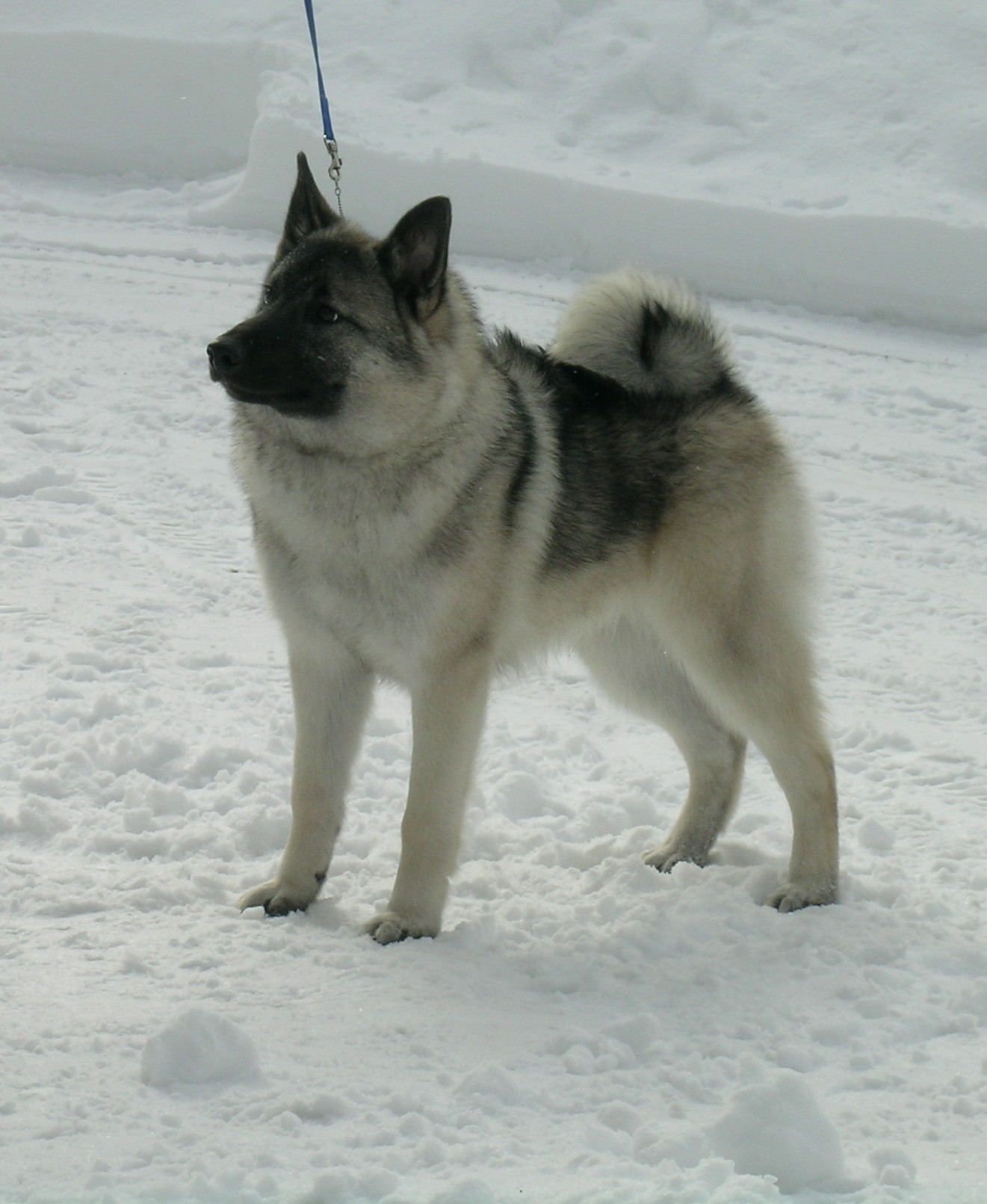
Is the Norwegian Elkhound Right For You?
Norwegian Elkhounds scored 36th among the dog breeds that he tested for intelligence. While it is obvious that these dogs are quick learners, they may not always obey instructions the first time that they are given. It is very important that these dogs respect their owners.
Although they were bred to be hunting dogs, Norwegian Elkhounds often become incredibly attached to their owners and will do well with children if they are exposed to youngsters early in life. These playful dogs are generally protective of their families and prefer to be around them at all times. Members of this breed tend to get along well with people, even those that are unfamiliar to them.
In 5 Words
- Playful
- Strong Willed
- Loyal
- Bold
- Hardy
Characteristics
Learn About the Norwegian Elkhound
Description
General Description
As a member of the Spitz family, Norwegian Elkhounds displays the usual traits for which these dogs are known. They have wide heads, curly tails, erect ears, and square-shaped bodies. They typically have an alert, intelligent expression in their dark brown, oval shaped eyes. Their ears will move backwards when the dogs are relaxed or being affectionate. Norwegian Elkhounds are sturdy breed that was designed to not only be agile but also to endure the harsh weather conditions of their homeland. Members of this breed can easily track large game for hours at a time. They are also quick enough to easily avoid being attacked during a hunt or while they are guarding livestock.
Size
Males of this breed stand approximately 19 to 21 inches (48 to 53 centimeters) in height, while their female contemporaries measure 18 to 20 inches (46 to 50 centimeters) tall. Female dogs also weigh less than males do at 40 to 55 pounds (18 to 25 kilograms) in weight, rather than the 50 and 60 pounds (23 to 27 kilograms) that is the average for male dogs. Ideally, Norwegian Elkhounds of both genders should stand between 19.5 and 20.5 inches (49.5 and 52 centimeters) tall and weigh between 48 and 50 pounds (22 and 23 kilograms).
Coat
Norwegian Elkhounds have a thick double coat that helps protect them from the cold. This feature is comprised of a flat outer layer and a dense inner layer. Acceptable coat colors for members of this breed include black, silver, and grey in a various combinations. The American Kennel Club also recognizes a tri color variety that is black, silver, and white in hue.
Short History of the Norwegian Elkhound
Norwegian Elkhounds have a long history that may date back at least six thousand years, making them one of the oldest breeds in existence today. In fact, skeletal remains of these dogs have been found buried alongside their Viking companions at sites that are approximately five thousand years old. These multipurpose dogs served their owners through history by hunting game of all sizes, pulling sleds, and managing livestock. Norwegian Elkhounds were primarily a working breed and they did not make their way to the show ring until 1877. In 1913, the American Kennel Club officially recognized the Norwegian Elkhounds as part of their hound group.
Temperament
Although they were bred to be hunting dogs, Norwegian Elkhounds often become incredibly attached to their owners and will do well with children if they are exposed to youngsters early in life. These playful dogs are generally protective of their families and prefer to be around them at all times. Members of this breed tend to get along well with people, even those that are unfamiliar to them, but this does not prevent them from being an effective livestock or estate guardian. Norwegian Elkhounds also have a loud bark that makes them a good watchdog breed. However, owners should be aware that the Norwegian Elkhounds’ amicable disposition does not extend to unfamiliar dogs and fights may result if strange canines wander past.
Caring for Your Norwegian Elkhound
General Health
Born in litters of between 7 and 14 puppies, the Norwegian Elkhounds have a typical lifespan of 10 to 14 years. As is the case with most dog breeds, certain health conditions can arise from time to time. Intracutaneous cornifying epithelioma, progressive retinal atrophy, Fanconi syndrome, renal dysplasia, hip dysplasia, and patellar luxation are serious ailments that have all been known to occur in members of this breed. Of lesser concern are the sebaceous cysts and hot spots that may also be problematic for Norwegian Elkhounds. Owners may want to have hip, eye, and urine tests done on their pets in order to spot potential problems before they become serious.
Care
Daily
Norwegian Elkhounds are a working breed, with all that implies. These active dogs will need at least an hour of vigorous exercise per day that should be broken up into two 30 minute workout sessions. A long, brisk paced walk is a good way for them to get their daily calisthenics, but members of this breed also enjoy running, jogging, and accompanying bicyclists.
Weekly
These dogs should have their coat brushed out a few times per week. Pet owners should also clean their dog’s teeth regularly to prevent both foul breath and tooth decay.
Monthly
Flea, tick, and heartworm prevention medication is a must for all dogs. Most of these products are typically administered on a monthly basis.
Grooming & Bathing
The Elkhound has a soft, woolly undercoat and a coarse, straight top coat. The thick double coat is easy to groom with brushing several times a week, but it sheds heavily. During seasonal sheds, you’ll think it’s snowing Elkhound hair. At those times, daily brushing and warm baths will help remove the loose hair so the new hair can grow in. On the plus side, there’s never any need to trim his coat or whiskers and baths are rarely necessary.
Exercise & Training
According to Stanley Coren’s book, The Intelligence of Dogs, Norwegian Elkhounds scored 36th among the dog breeds that he tested for intelligence. While it is obvious that these dogs are quick learners, they may not always obey instructions the first time that they are given. It is very important that these dogs respect their owners. Norwegian Elkhounds require clearly defined, consistent rules and a firm hand when they are being trained in order to keep them out of trouble. It is also a good idea to keep instruction periods short and entertaining so that these smart dogs don’t lose interest.
Interesting smells may nonetheless take precedent over their owner’s commands and, as such, members of this breed should not be let off their leashes in unsafe environments. Prospective owners should also note that Norwegian Elkhounds have a very loud bark and plan accordingly. Those individuals who want a quiet pet should probably look at other breeds instead of this one.

